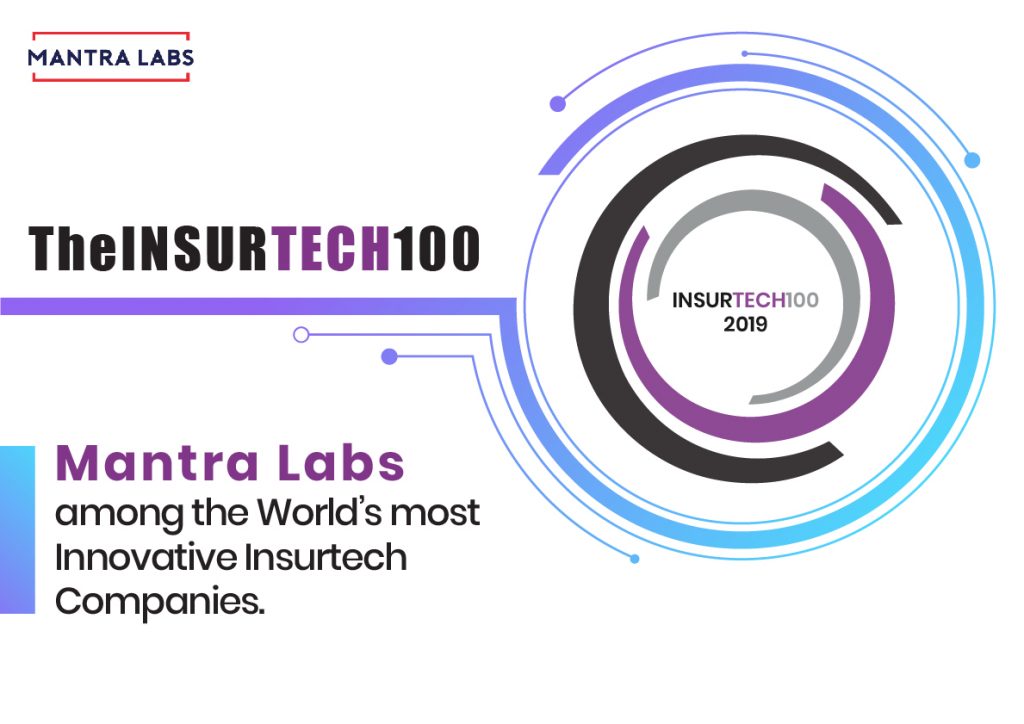The company receives recognition for being a pioneer in transforming the global insurance industry through innovative products and solutions that solves real-world challenges.
Bengaluru, Karnataka, Oct. 24, 2019
Mantra Labs announced today that it has been recognized by Fintech Global in their InsurTech100 2019 list. InsurTech100 recognizes the 100 most innovative insurance solution providers in the world curated by industry stalwarts.

FinTech Global is a specialist research firm offering the most comprehensive data, valuable insights and powerful analytical tools to the global FinTech industry. The finalists were selected by a panel of analysts and industry experts from an exhaustive list of over 1,000 companies. The standout businesses are recognized for their innovative use of technology to solve a significant industry problem, generate cost savings, or improve efficiency across the insurance value chain.
Mantra Labs offers three core products for solving the most pressing challenges faced by InsurTechs around — claims processing, workflow management, process automation, onboarding, leads maximization, customer experience & engagement.
FlowMagic is a Visual AI platform for Insurer Workflows. With FlowMagic, insurers can create, customise and monitor workflows. It is built to scale across the insurance value chain. It comprises of AI-powered applications which can be strung together to execute any workflow.
Lead Conversion Accelerator is an AI-enabled tool that allows insurers to maximize capture from the sales funnel for AI-driven lead allocation, prioritization and conversion.
Multilingual AI-Powered Chatbot allows insurers to fulfil routine service tasks via Natural Language Processing (NLP) and Machine Learning (ML) models trained on insurance-specific parlance.
“Mantra Labs is leading InsurTech innovations through its deep advisory and consulting approach to understand ‘actual’ user and consumer problems,” says Mikhail Mitra, Co-founder & Chief Product Officer, Mantra Labs. “We’re proud to be recognised as a pioneer in transforming the global insurance industry.”
About Mantra Labs
Mantra Labs is an AI-first product & solutions firm solving the most pressing front & back- office challenges faced by InsurTech and Consumer Internet enterprises. Having worked with some of the World’s leading insurers like Religare, DHFL Pramerica, Aditya Birla Health, and AIA Hongkong along with unicorn consumer startups like Ola, Myntra and Quikr, Mantra Labs has been deeply involved in developing technology solutions for business-specific problems. The company also has strategic technology partnerships with MongoDB, IBM Watson and Nvidia.
Contact information:
Email: hello@mantralabsglobal.com
Address: Bangalore, India
Phone number: 97404 95689, 80409 92941
Website: https://www.mantralabsglobal.com
Knowledge thats worth delivered in your inbox





